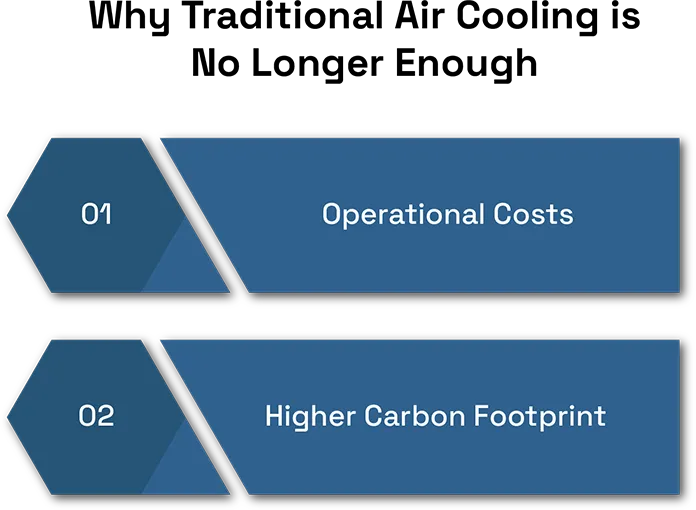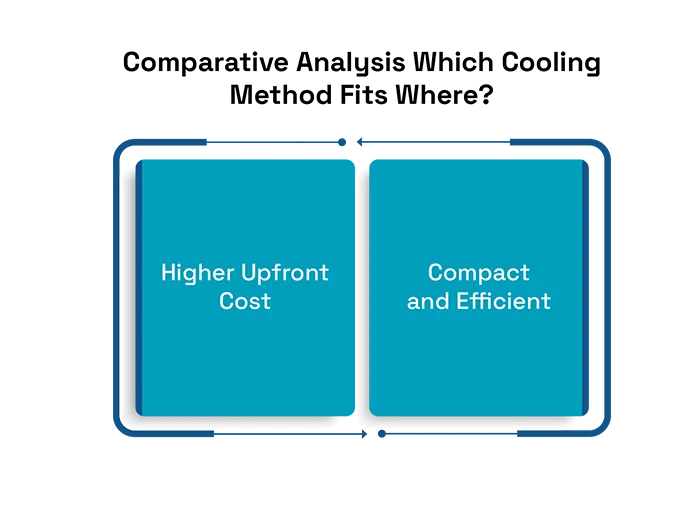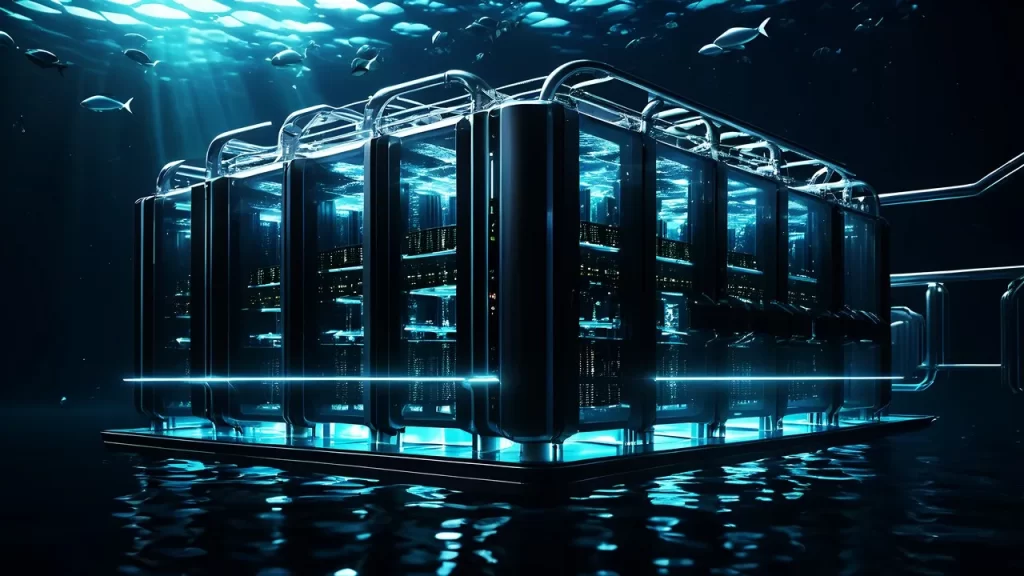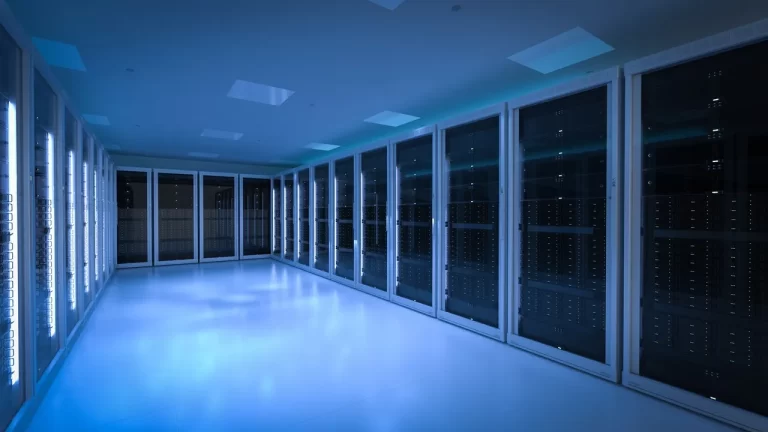The rise of AI and HPC has increased computing needs and heat output in modern data centers. Air cooling struggles with modern chips like NVIDIA Hopper GPUs, which start at 700W TDP. Cooling makes up much of the power use. A better, scalable solution is needed.
In action, liquid cooling has come up as an attractive solution. It does this by providing better heat transfer characteristics than air and thus accommodating higher power densities of the IT equipment while at the same time allowing for more efficient and smaller-scale data centers. As pressure on the environment and expectations of computing increase, it is imperative that liquid cooling is not only part of the conversation but is implemented.
Why Traditional Air Cooling is No Longer Enough
Air is a bad conductor of heat because of its physical characteristics of this material. The issue that concerns air cooling is the fact that it is much less efficient in transferring heat than water—the heat transfer coefficients reach only 1/37 of those of water, with due regard to the current heat loads of processors. Hotspots form, reducing performance even with good airflow and HVAC systems.
Air cooling needs more space and energy for fans and chillers. This increases operational costs and carbon footprint. Since many servers today have processor thermal design power greater than 280 W, and the rack power ranges from 100 kW, air cooling is obsolete and ineffective for the environment. It points to the problem of increased inefficiency that demands a superior and more efficient cooling technique.

Liquid Cooling Technologies: RDHx, Direct Liquid Cooling, and Immersion
RDHx systems bridge air and liquid cooling. Mounted on the rear of racks, they use liquid to extract heat from air before it’s expelled. RDHx offers a relatively simple retrofit for existing infrastructure and reduces reliance on CRAC (computer room air conditioning) units. However, it still depends on airflow within the rack and may fall short for extremely high-density deployments.
Direct liquid cooling (DLC) takes a more targeted approach. It utilizes cold plates to access heat right touching the surface of the CPUs and GPUs. with high heat transfer coefficients (up to 25 W/cm²-K). It’s ideal for today’s AI workloads but comes with engineering complexity: leak-proof manifolds, coolant distribution, and condensation management must all be carefully designed. It also often needs supplementary air cooling for components like memory or SSDs.
Immersion cooling is pushing innovation further. Single-phase immersion cools servers by submerging them in dielectric fluid. This method offers excellent temperature uniformity and reduced mechanical complexity. Two-phase immersion enhances this by allowing the fluid to vaporize and recondense, drastically improving heat removal through latent heat transfer. Some fluids used may harm the environment due to their high GWP. In long-term strategies.
Comparative Analysis: Which Cooling Method Fits Where?
When comparing liquid cooling methods, thermal performance is key. DLC and two-phase immersion are best suited for extreme TDPs and tightly packed racks, thanks to their high thermal conductivity and ability to prevent hotspots. RDHx, while not as robust thermally, offers easier integration into legacy systems. From a PUE (power usage effectiveness) standpoint, all liquid cooling methods promise significant gains, especially immersion setups that eliminate much of the need for fans.
Setup cost and complexity differ by method. RDHx has lower upfront costs but limited future scalability. DLC is more costly due to its precision-engineered plumbing and maintenance needs, but offers flexibility and performance. Immersion systems require the most change—custom enclosures, fluid handling systems—but can deliver compact, ultra-efficient setups ideal for hyperscale or edge data centers. Environmental impacts also differ: water-based systems are more sustainable, while fluorinated dielectric fluids in immersion cooling may require careful lifecycle management.

Preparing for the Liquid Future: What Data Centers Need to Know
It’s not just a tech shift—it affects IT infrastructure. The risks associated with liquid cooling systems and the organization’s readiness to implement the recommendations. Servers must fit and support liquid cooling systems. and require integration with FWS, CDU, or other advanced cooling architectures. Therefore, it is crucial to achieve the right class of coolant, whether water or glycol blends, or dielectric fluids, based on thermal performance, electrical safety, environmental concerns, and costs of maintenance.
They will also have to abide by the norms laid down by sources like ASHRAE and must have a placement system for leak detection and control of humidity, as well as residual air-side cooling. Those who start investing in hybrid or fully liquid-cooled environments now will be in good standing in the future, given rising thermal and environmental pressures. AI-based cooling tools are already being used, and utilizing low-GWP fluids is already on its way.
Conclusion: Liquid Cooling Is No Longer Optional—It’s Inevitable
Currently, as data centers are becoming denser and more powerful, resulting in increased demand for power, air cooling is proving itself to be not effective or environmentally friendly. RDHx, DLC, or immersion cooling all provide not simply better thermal performance but the route to efficiency and sustainability.
The implementation also demands time, money, and changes in business organization and processes; however, the rewards are worthwhile as they include enhanced efficiency of energy consumption, smaller size, and promotion of future chips. The industry-shaping water-cooled operators of today’s hyperscale, open, and edge facilities know that it is not simply a better way to cool—or a better type of cooling—liquid cooling is the way forward for the data center of the future..








